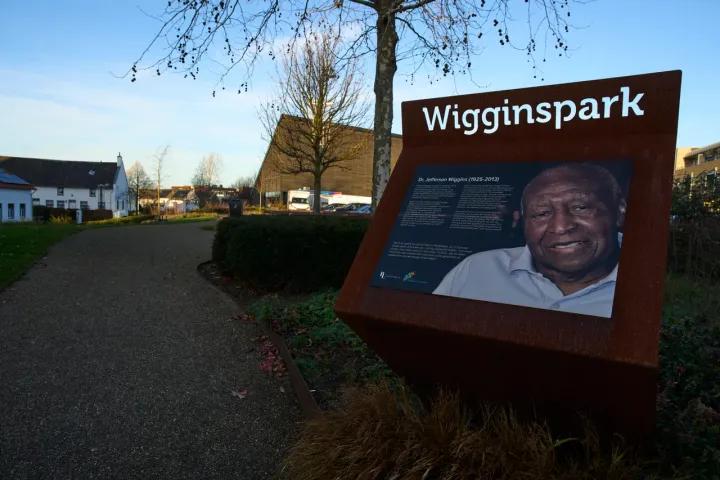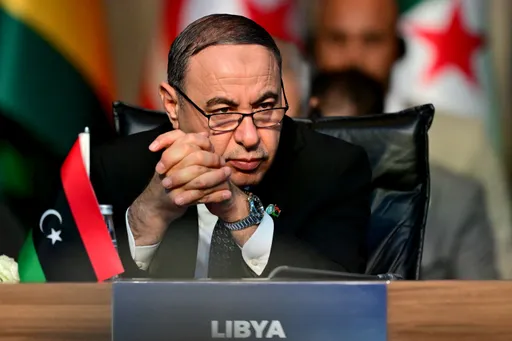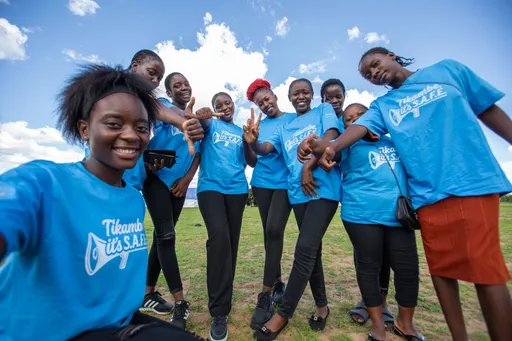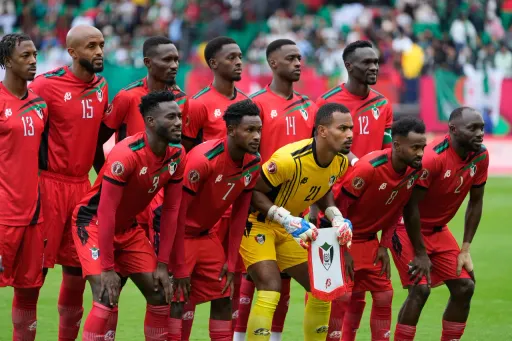By Charles Mgbolu
They say a picture is worth a thousand words. Nigerian photographer and artist Etinosa Yvonne frames stories in thousands of pixels packed with the unbearable light of unspoken pain.
In February 2018, the 29-year-old amateur shutterbug was seated in an art centre in the Nigerian capital of Abuja and watching Salam Neighbour, an award-winning documentary spotlighting the lives of two Syrian refugees, when something extraordinary happened.
The poignant story on the screen triggered an epiphany in her mind's eye – black-and-white portraits of anguished faces she had encountered a year ago at camps in Nigeria for internally displaced people.
Yvonne remembered their stories of pain and suffering. She heard their voices ringing in her ears, recounting how they were separated from their communities during violence perpetrated by terrorists, militants and kidnappers.
Many of these people had seen death up close. Some escaped the brutal attacks with just the clothes they were wearing on their backs.
A large number of these victims were from Borno State, which reported over 38,000 deaths between 2011 and 2023 in the violence unleashed by Boko Haram, according to research agency Statistica.
All of a sudden, Yvonne found her mission. She would tell their stories through her photographs.
Yvonne decided to advance her photography training so that she could use it as a tool to help audiences emotionally connect with the sufferings of people who had witnessed extreme cruelty and violence.
Five years on, she looks back at her decision as being more than just a professional breakthrough.
Journey of learning
"I had to teach myself the technical aspects of documentative photography using online tutorials from YouTube. I wanted to help these people tell their stories in an entirely new way," Yvonne tells TRT Afrika.
"I needed people to know how those who survived are coping with such experiences mentally. How do they deal with the psychological torture of seeing their loved ones murdered?"
The multimedia project delved into the coping mechanisms adopted by survivors of terrorism and extreme instances of conflict and cruelty in Nigeria. Yvonne called her labour of love "It's All in My Head'".
"The project combines research, dialogues, and the fusion of portrait photography, video, and written narratives to craft installations that delve into the profound impact of these horrifying events on survivors' mental health and well-being," she explains.
"I needed to try to represent pain as a prospect. To help my audience understand, just by looking at these photographs, how it feels to be a happy father surrounded by your children and suddenly lose them all."
Using double exposure, a technique in photography that involves subjects being photographed in different layers of exposure and then combining the two photographs into one, Yvonne is able to create harrowing yet crisp images of people layered with symbolic images that represent their pain.
"Representing mental pain is difficult because I am not in their shoes. It's impossible to get it 100%, but I try my best to get as close as possible," she tells TRT Afrika.
Quest for catharsis
The central aim of the project is to advocate increased access to long-term psychosocial support for the survivors of violent attacks, with a strong emphasis on its pivotal role in enhancing the sustenance of their mental well-being.
In the past five years, Yvonne has worked with 60-odd survivors of terrorism and instances of conflict and cruelty in different parts of Nigeria.
"It is interesting to note that while these survivors find a way to navigate their realities as well as process their experiences, many of them never get to talk about their experiences and the impact on them mentally," she says.
Yvonne argues that the idea of "moving on” can be a mirage as these victims, most of whom witnessed violent attacks and bloodshed, are often stuck in the past while grappling with the realities of the present.
"A lot of the survivors of these atrocities struggle with depression, PTSD, and vengeful thoughts, while others find solace in their existence and religion. I have pushed this project to draw society's attention to the state of mind of some of these survivors," says Yvonne.
Going places
Yvonne has stayed true to her pledge by organising many photo exhibitions and touring museums with her collection within and outside the continent.
She has taken over 40 photographs, some of which are permanent collections on display in internationally acclaimed museums such as the Fitchburg Art Museum in Massachusetts, US.
"I needed people, especially those outside Africa, to understand that these victims they hear of in the news are not just plain statistics. They are real human beings, with real feelings, with dreams and aspirations that were suddenly and often violently taken away," says the young photographer.
She has a new exhibition planned at the National Museum in the southern Nigerian state of Cross River.
"This time around, I am fighting for the rights of children, disadvantaged women, and other vulnerable people in Cross River State who have had allegations of superstition and witchcraft levelled against them. This has had a profound impact on their mental health," says Yvonne.
As an artist, all she aspires is for her photographs to truthfully project the pain and stigma these people endured. "I hope my work sparks a global conversation because these victims deserve so much better from every one of us," she says.
























